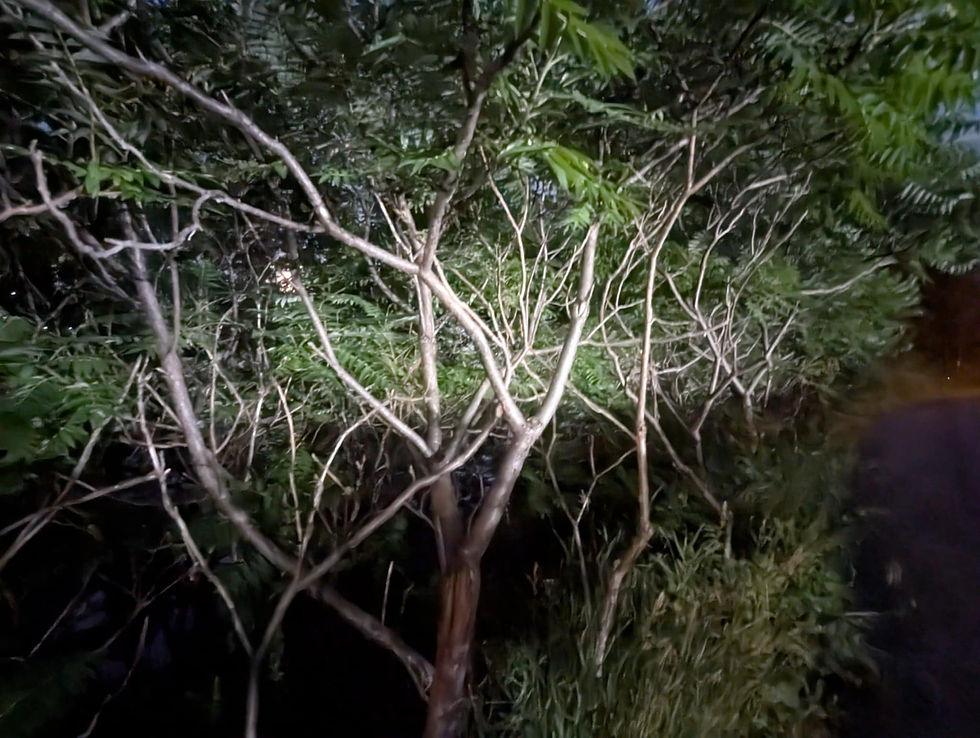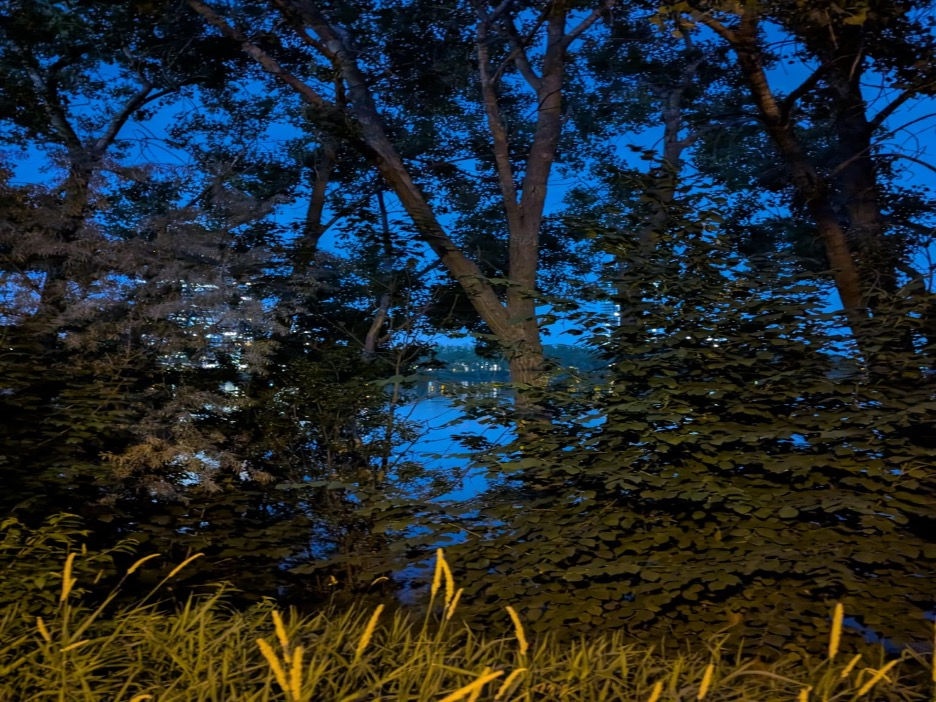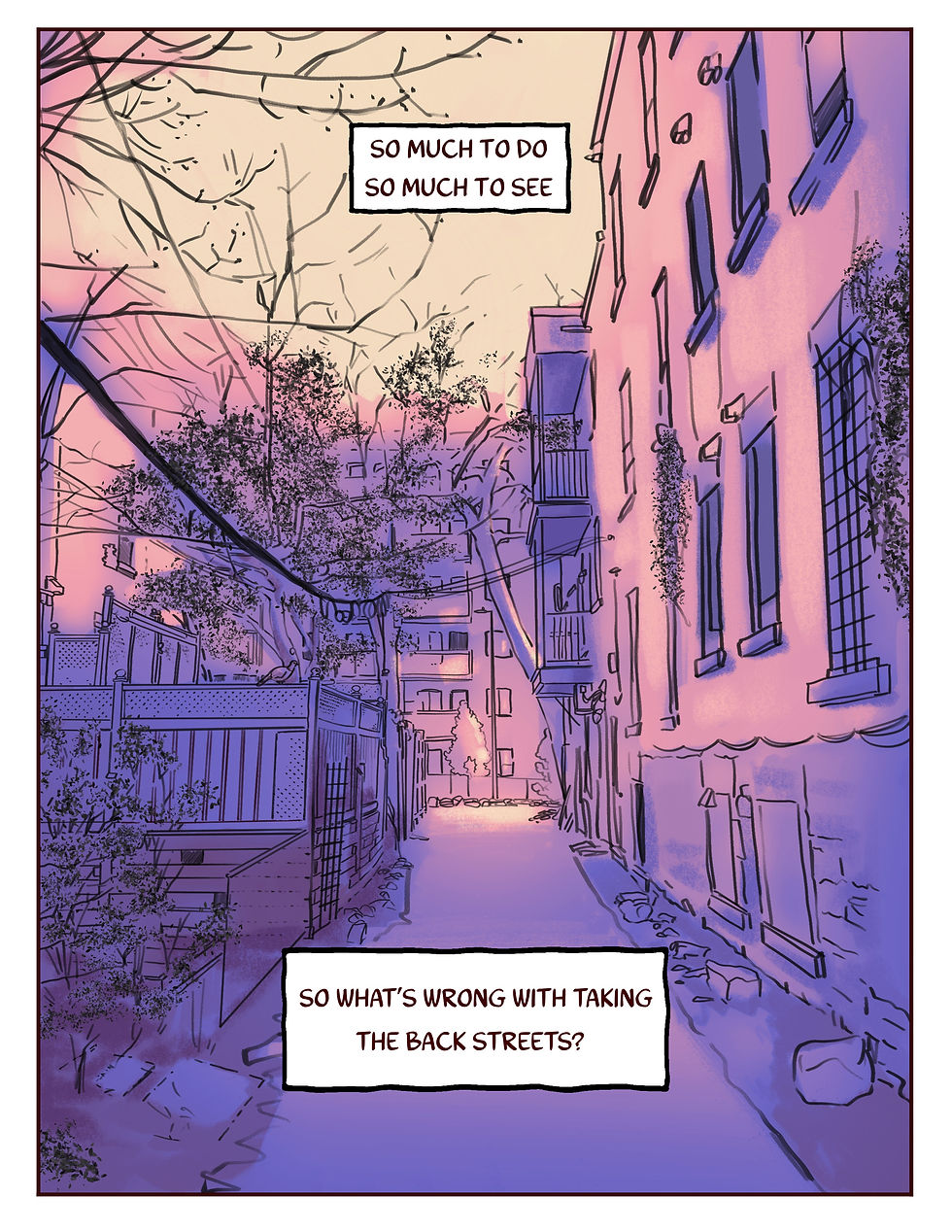Night Sight and Other Technological Resonances
- David LeRue
- Jul 10
- 5 min read
Have you ever been taken by an odd technological feature? Last night, I became enamoured with Night Sight—A longer exposure feature on my smartphone where the photographer must hold still for three to five seconds to gather additional light of a given frame. A small dot comes on encapsulated in a larger circle that the photographer has to retain within this space, lest the image turn out blurry.
I have one of the last smartphones before everything became AI integrated X Y Z (or are they doing that now with firmware updates?). A google pixel 7, that came on the market in October 2022 that I purchased in April 2023, namely because it was the cheapest phone, and the seven-year-old iPhone I had been nursing was proving to be inadequate for my holy trinity of productivity apps (chess.com, Microsoft outlook, and Instagram). I suppose now I could add the fit app, which is a stock Google app that tracks my step count and the arbitrary metric of ‘heart points,’ if of which I do not get 10,000 and 40 respectively I am certain I will die.
I came across Night Sight when I was walking back from a café that is open in evenings. It was about 9:30 at night, and the long route between the café and my home cuts through a wonderful, several kilometer park beside the St. Lawrence River. The side closest to the river has been reclaimed as a ‘nature’ path, meaning that several overgrown fauna and inhabiting flora sit beside the public park area. Because it is July, there are several fireflies that are perceptible from the witching hour onward. Streetlights, the moon, and lights from buildings make some of the plants perceptible to the eye. A shame, I thought, that I could not capture this with a photograph. Pictures at night never come out like you want them to, and like your eyes see.
I took a picture.

Not bad, I thought. Bump up the contrast a bit on photoshop and I could make out some of the branches. I had captured this same scene a few steps back with my eyes and saw my shadow in the woods. A light from a seniors centre was casting an intense shadow of myself. I did not want to walk backwards because there was a man on a bench, and to him, I was a strange man on a path.
I took another.

A bit better. Now I can see some of the quackgrass, thistle, and what are those weeds that look like bullrushes? I always used to call them cattails (plant people are going to be mad at this one). Not to mention the burning dark blue of the sky and the water.
A few more. Too dark to see, too dark to do anything with.
What’s this?
Night Sight.

I have been watching Twin Peaks lately, and I am in the bad part of season two where I just re-watched that scene where Major Briggs is abducted by aliens or the woods [I refuse to believe this would spoil anything important]. A flashing light with some impressions of a hooded figure. I captured that sentiment here, mostly because I failed to hold the camera still.

A bit better…

Light coming from two sources. It provides a clearer view of the first image.
Alas, Night Sight.
I was not seeing what my eyes saw. Instead, I was seeing something else quite different. Something enhanced and different in the photograph that was edging toward my perception in reality. A photograph does not capture reality after all, but it captures something mechanical representing reality. It reminded me of technologies that feel like a lifetime ago that were insightful to my early artmaking that I feel I can admit to now but were shameful at the time. Photoshop cutout filter, which groups like colours together into various splotches. A filter I had on a Samsung Galaxy 3 (neo?) that would apply a cartoon-like filter onto the world with more abstractions.
These tools were revolutionary in 2012. Not that a filter was revolutionary per-se, but when you could carry a device that could approximate a DSLR camera in your pocket. My phone was nearly as effective as my D3100 Nikon digital camera and could edit at the same time! I was never much of a digital artist, but I owe a credit to digital tools and photography for pushing my painting forward as much as my capacities to observe and to paint. I would use cutout to mix colours that I could dab onto the page to get the exact match, which led to a breakthrough in my understanding of colour theory and neutral colours. I would use photoshop to arrange compositions that I would later paint. Even some later illustrator helped me use laser cutters for shaped canvases that never saw the light of day. Night Sight seems tame in comparison.
I know this is a bit of a diversion from what this post has been, but memories like this make me sad about the next technological leap we are making, where GenAI can pump out anything from blog posts to realistic looking images without any tension. Indeed, the editor I am uploading this to will generate me an entire blog post about the topic of my choosing. I am not sure why one would want to do this. But when the AI can make the image, where is the productive tension? I was at a conference recently where a presenter praised Gen AI for its ability to allow students to make comics about their lives even though they did not have the technical ability to draw. This, they argued, made artmaking accessible and instilled pride in students. This nearly sent me into a depression—Isn’t artmaking to be hard? What pride is there in prompting a machine? Are we not supposed to struggle to depict what we want, fuss over the composition, and put our fingerprints throughout any artistic process, including digital and analog?

To get more to the point, are future generations of artists and students going to enjoy the oddities of a tool like Night Sight when rapid image generation is but a click of a button away? Take a picture, let the AI, built on the backs of the intellect and creativity of millions of artists, arrange that for you. The moon is not in an ideal composition, let me move that a few inches to the right and enhance. And enhance. And enhance…
One last stop before home. I noticed some strangers living in the moment, possibly not despairing about how AI might pose the most banal threat to our collective humanity. Not by some kind of skynet terminator takeover, but by steamrolling that which makes us human in the first place.


Night Sight is pretty good. I might make some paintings from this.











Comments